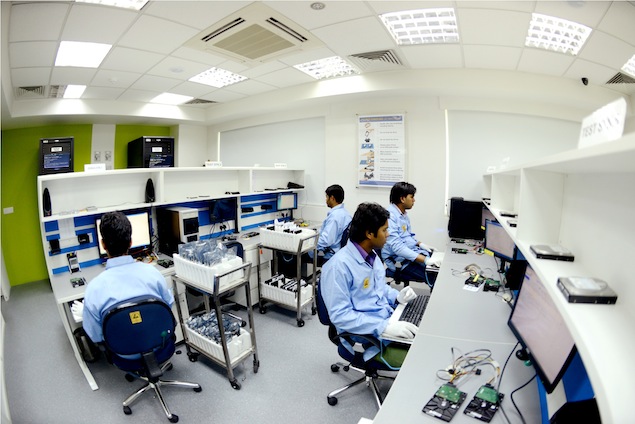- Home
- Science
- Science News
- New technique may help develop smaller hard drives
New technique may help develop smaller hard drives

With a better understanding of how materials interface, scientists can tweak the properties of different materials more easily, and this opens doors to the development of better solar cells, novel superconductors and smaller hard drives.
Some of the most exciting condensed matter physics problems are found at the interfaces of dissimilar materials.
"If you put two materials together, you can create completely new properties," said Andrivo Rusydi, an assistant professor at the National University of Singapore.
"For instance, two non-conducting, non-magnetic insulators can become conducting and in some cases ferromagnetic and superconducting at their interface," explained Rusydi.
But scientists didn't know what happened at the interface.
To resolve this long-standing mystery in the physics of condensed matter, the scientists investigated the interface between strontium titanate and lanthanum aluminate, two insulators that become conductors at their interface.
In doing this, the team uncovered another mystery.
"For this interface, a theory predicts that the conductivity should be tenfold higher than what is observed. So, 90 percent of the charge carriers - the electrons - are missing," said Rusydi.
To search for the missing electrons, the scientists employed high-energy reflectivity coupled with spectroscopic ellipsometry.
It was found that only about 10 percent of the expected electrons are free to migrate to the interface of the two materials to form a conduction band.
The remaining 90 percent are bound in the molecular lattice at higher energy states that were not visible to light sources used in earlier searches.
"It explains why more than just one layer is necessary to fully unfold the interface properties," Rusydi said.
"If only a part of the electrons migrate to the interface, you need a bigger volume to compensate for the symmetry breaking," Rusydi added.
The study appeared in the journal Nature Communication.
For the latest tech news and reviews, follow Gadgets 360 on X, Facebook, WhatsApp, Threads and Google News. For the latest videos on gadgets and tech, subscribe to our YouTube channel. If you want to know everything about top influencers, follow our in-house Who'sThat360 on Instagram and YouTube.
Related Stories
- Galaxy S24 Series
- MWC 2024
- Apple Vision Pro
- Oneplus 12
- iPhone 14
- Apple iPhone 15
- OnePlus Nord CE 3 Lite 5G
- iPhone 13
- Xiaomi 14 Pro
- Oppo Find N3
- Tecno Spark Go (2023)
- Realme V30
- Best Phones Under 25000
- Samsung Galaxy S24 Series
- Cryptocurrency
- iQoo 12
- Samsung Galaxy S24 Ultra
- Giottus
- Samsung Galaxy Z Flip 5
- Apple 'Scary Fast'
- Housefull 5
- GoPro Hero 12 Black Review
- Invincible Season 2
- JioGlass
- HD Ready TV
- Laptop Under 50000
- Smartwatch Under 10000
- Latest Mobile Phones
- Compare Phones
- Huawei Pura 70 Pro+
- Huawei Pura 70 Ultra
- Tecno Camon 30 Premier 5G
- Motorola Edge 50 Fusion
- Oppo A1i
- Oppo A1s
- Motorola Edge 50 Ultra
- Leica Leitz Phone 3
- Asus ZenBook Duo 2024 (UX8406)
- Dell Inspiron 14 Plus
- Realme Pad 2 Wi-Fi
- Redmi Pad Pro
- Cult Shock X
- Fire-Boltt Oracle
- Samsung Samsung Neo QLED 8K Smart TV QN800D
- Samsung Neo QLED 4K Smart TV (QN90D)
- Sony PlayStation 5 Slim Digital Edition
- Sony PlayStation 5 Slim
- IFB 2 Ton 3 Star Inverter Split AC (CI2432C323G1)
- Daikin 1 Ton 3 Star Inverter Split AC (FTKL35UV16W+RKL35UV16W)

















